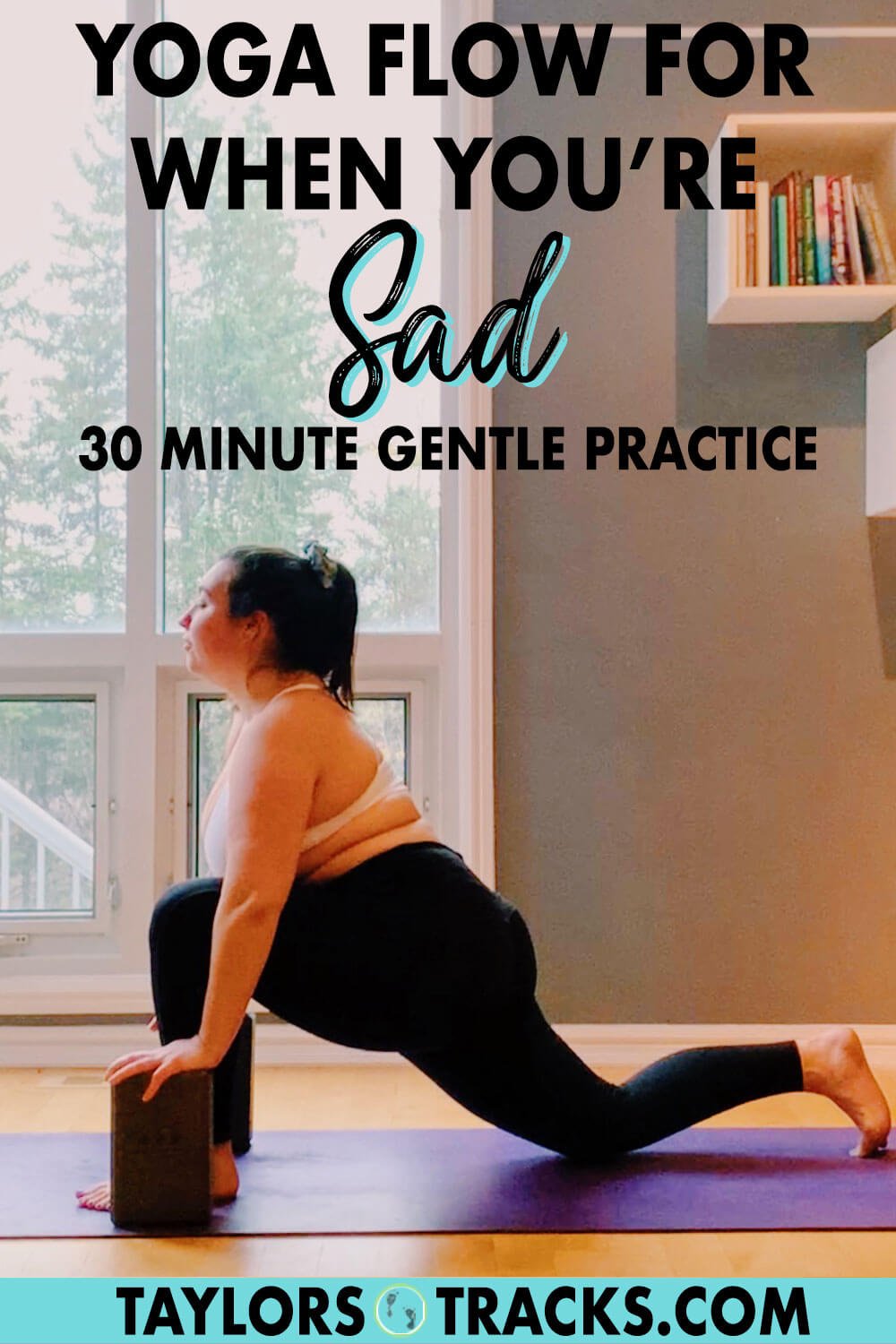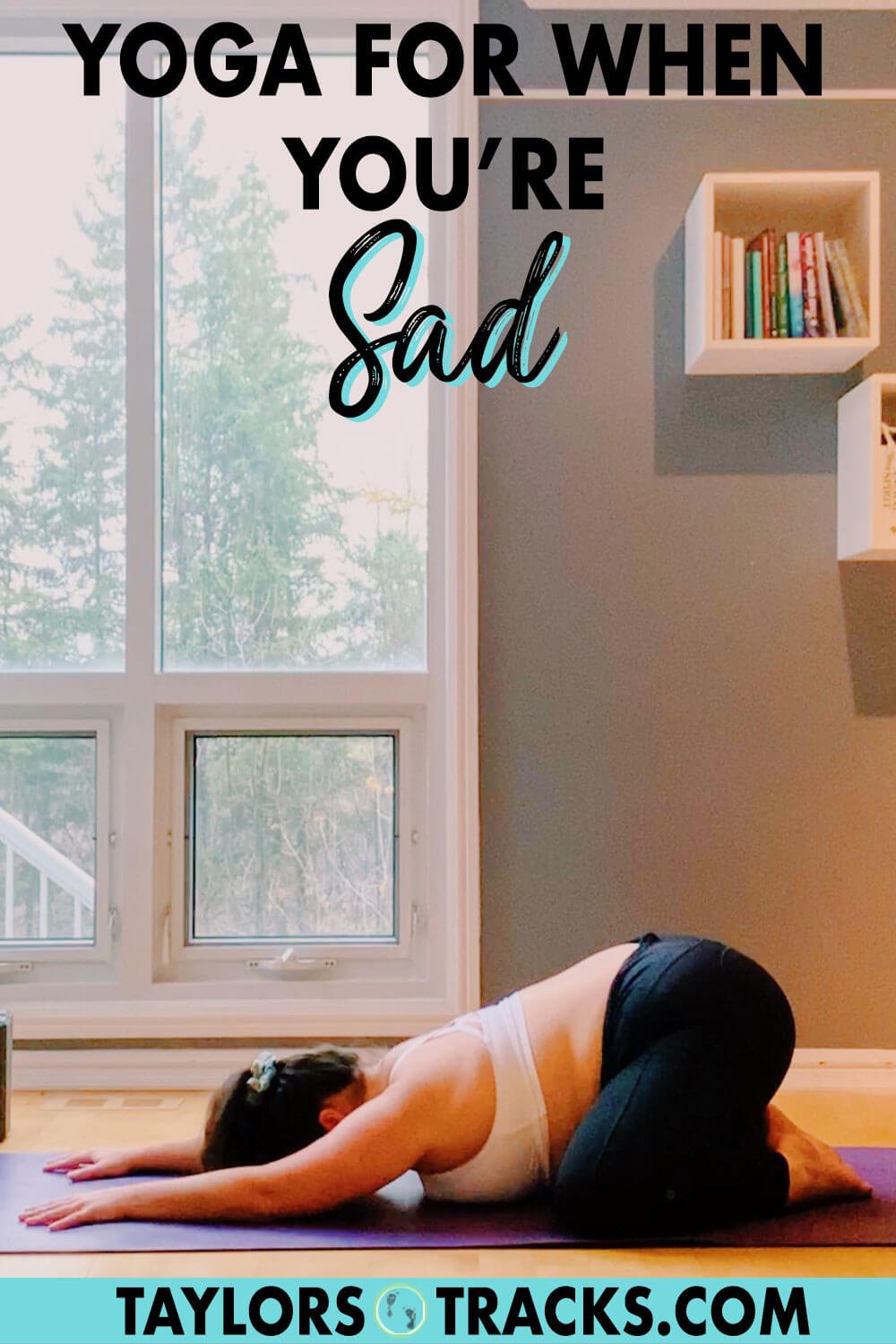Yoga for Anxiety: 11 Poses to Try
- Fish pose.
- Extended Puppy pose.
- Child's pose.
- Head-to-Knee Forward Bend.
- Seated Forward Bend.
- Legs-Up-the-Wall pose.
- Reclining Bound Angle pose.
- Research.
Is yoga good for broken heart?
Instead of using distraction to move away from the pain, yoga encourages us to turn toward it—to see it, feel it fully, and ultimately, to understand it. In doing so, we learn we no longer have to fear pain or push it away. Yoga gives us the tools to manage the experience on its own terms. >>
Can yoga help with grief?
There are even specialized classes and practices devoted to yoga for grief. Grief yoga can help you deal with the physical and emotional effects of anguish, feel connection or closure with who or what's lost, and more.
What are the 5 mental benefits of yoga?
Yoga's incorporation of meditation and breathing can help improve a person's mental well-being. “Regular yoga practice creates mental clarity and calmness; increases body awareness; relieves chronic stress patterns; relaxes the mind; centers attention; and sharpens concentration,” says Dr. Nevins.
Can yoga relieve symptoms of depression?
The focus on deep breathing and stretching your body is effective for relieving the symptoms of depression, such as sleep troubles, pain, and a loss of energy. No matter which style of yoga you choose, you can adapt the poses to suit your level. Many studios, hospitals, and local community centers offer yoga classes.
What type of yoga is best for emotional release?
On a emotional level, yin yoga helps to release not only physical but mental blockages. This might be through finding moments of stillness, working into an area of the body where we are gripping or resisting through fear or bringing more mindfulness into our everyday living.
19. Queen of my heart Adriene Mischler of Yoga With Adriene, pictured here w/ a fan going goggle-eyed with joy at her live class in Kew Gardens (that fan is me. The class was amazing). If you’re feeling angry & sad now, this vid is perfect and VERY easy https://t.co/YQIeMO6bFM pic.twitter.com/cd8VZNjw0X
— Anna Carey (@urchinette) December 23, 2020
Can yoga release trapped emotions?
During yoga practices, we begin to unravel muscular tension and this process can also release the associated emotions bound in our muscles.
Frequently Asked Questions
How do you get rid of trapped emotions and energy blocks?
How To Release Emotion Trapped In The Body
- Through your own inner awareness of your energy.
- By becoming aware of the sensations inside your body.
- By learning to open and breathe when tension arises versus react and close up.
- By learning to let your emotions flow and express freely.
How yoga helps in emotional stability?
Yoga can help restore emotional balance by promoting mindfulness and reducing stress levels. Yoga is effective in managing anxiety disorders and depression. The practice helps individuals become more aware of their thoughts and emotions without becoming overwhelmed.
How does yoga make you feel calm?
But yoga may have additional benefits. It can affect mood by elevating levels of a brain chemical called gamma-aminobutyric acid (GABA), which is associated with better mood and decreased anxiety. Meditation also reduces activity in the limbic system—the part of the brain dedicated to emotions.
Why do people get emotional during yoga?
You cry, get angry, and feel good in yoga because of its characteristic movement, breath, and rhythm. Yoga uses tension and release and introduces novelty to process, unwind and change long-held patterns of feeling and emotion, including fear, sadness, and anxiety.
Does yoga release negative emotions?
Can Yoga Release Emotions? Absolutely. Although It can be shocking, yoga can release emotions. This occurs because of the stimulation of your body and your mind that takes place when you're practicing a grounding exercise, like yoga.
What are the 4 emotional benefits of yoga?
Yoga's incorporation of meditation and breathing can help improve a person's mental well-being. “Regular yoga practice creates mental clarity and calmness; increases body awareness; relieves chronic stress patterns; relaxes the mind; centers attention; and sharpens concentration,” says Dr. Nevins.
Why did yoga make me cry?
It could be pent-up emotions. It could be the only time you've had in days to slow down, feel, and process your emotions. It could be the movement-induced release of hormones, which can affect your emotions,” explains Melissa Renzi, a yoga teacher and licensed social worker.
Does yoga release trapped emotions?
During yoga, as sometimes occurs in massage and other physical therapies, the release of physical tension can also cause an emotional release.
FAQ
- What are 3 emotional benefits of meditation?
- The emotional and physical benefits of meditation can include: Gaining a new perspective on stressful situations. Building skills to manage your stress. Increasing self-awareness.
- Why yoga pose releases sadness
- Slideshow: 12 Poses to Release Sadness · Upward Salute · Standing Forward Bend · High Lunge · Downward-Facing Dog · Plank · Chaturanga · Upward-Facing Dog.
- Can yoga help with loneliness?
- Yoga is known for helping with stress and anxiety, but it can also relieve loneliness too. No one is a stranger to feeling lonely. Whether it's just for a moment or months at a time, feelings of isolation are part of the human experience – and it's something we can feel even if we are surrounded by people.
- How do you release grief from your body?
- Taking a short walk or working in the garden will fill you with fresh air, release negative energy, and perhaps even give you a bit of a reprieve. Yoga can help release grief symptoms as well, clearing out and moving negative energy, releasing tension making you feel lighter and perhaps even finding happiness.
- How to properly addresa emotional relese during yoga
- Oct 19, 2022 — Stand in the Tadasana. Breathe in, and lift your left foot, such that the heel is placed towards the left buttock and your knees are bent.
- How does yoga make you feel emotionally?
- You cry, get angry, and feel good in yoga because of its characteristic movement, breath, and rhythm. Yoga uses tension and release and introduces novelty to process, unwind and change long-held patterns of feeling and emotion, including fear, sadness, and anxiety.
- Can yoga release stored trauma?
- It is a way to safely connect with your body, regaining any control, love, or acceptance that may have been threatened during a traumatic experience. The practice of trauma-informed yoga can free the system from this ongoing stress-response in various ways.
Yoga for when you're sad
| What are the symptoms of yoga release toxins? | Although these “cleansing reactions” aren't comfortable, they are a healthy and completely normal part of the process. Some common symptoms of toxic imbalance are headaches, aching muscles or joints, fever, sweating, bloating, body odor, rashes, sleepiness, and weakness or exhaustion. |
| What parts of the body hold what emotions? | The visualization of emotions on a human body template created for the present study (Figure 2) revealed that specific patterns existed between the visceral system and corresponding emotions such that anger corresponded with the liver, happiness with the heart, thoughtfulness with the heart and spleen, sadness with the |
| Where is emotional pain stored in the body? | Our chests and our hearts store the hurt that we experience through the actions of others. Those who repress their feelings of hurt, usually complain of mysterious chest pains. In most cases, no physical cause of pain is diagnosed. Stress leads to shallow breathing and a feeling of tightness in the chest. |
| Where do emotions stay in the body? | Emotional information is stored through “packages” in our organs, tissues, skin, and muscles. These “packages” allow the emotional information to stay in our body parts until we can “release” it. Negative emotions in particular have a long-lasting effect on the body. |
| Are emotions stored in the hips? | Indeed, this can lead to unprocessed emotions that get stored in the body, including the hips. Emotional tension in the hips is a common manifestation of stored trauma, and it can be challenging to release this tension without addressing the underlying emotional aspects. |
| What trauma is stored in the legs? | Fear Fear and discomfort can be stored in the inner thighs, to remind us that we are not feeling safe and may need to take off at any time. |
| Which yoga is best for healing trauma? | If negative emotions or stressful energy has been repressed, they may also become trapped deep in your connective tissues. Yin Yoga can gently release these emotions and energy, helping you to process them and heal from them. |
- How yoga releases stored emotions in the body?
- Backbends and hip openers are the primary asanas that help release emotional tension. Asanas that work on the throat, chest, shoulders, and hips are commonly used to release emotions, although you can use any posture that feels right for you.
- How is yoga related to emotions?
- During yoga practices, we begin to unravel muscular tension and this process can also release the associated emotions bound in our muscles. Our yoga practice strengthens our physical, mental and emotional bodies and increases our capacity to process difficult emotions and past traumas.
- How do you move emotions through your body?
- Maybe you feel the need to cry, scream into a pillow, go for a swim, walk or run, dance it out, hit a punching bag, do some gardening, tapping, yoga or TRE, paint your feelings out, or simply breathe deeply while facing the sun—whatever feels cathartic in that moment, do it.
- What yoga pose is good for depression?
- Savasana, or Corpse Pose is a reclined pose that is not physically taxing, but can be challenging when the mind starts to wander. Teach your body to release its tension in Savasana to improve mood and sustain positive feelings throughout the day.
- How do you release suppressed emotions with yoga?
- When it comes to releasing suppressed emotions with yoga, few poses are as comforting as Child's Pose.
- Come onto your shins with the tops of the feet on the floor. Bring your big toes together and spread your knees apart.
- Rest your forehead on a block to give your brain a rest.
- When it comes to releasing suppressed emotions with yoga, few poses are as comforting as Child's Pose.
- How do you do emotional detox yoga?
- Yoga Moves for an Emotional Detox
- Anxiety - Eagle pose (I am capable and safe)
- Anger or Resentment = Upward dog or open hearts (I love myself enough to forgive)
- Shame or embarrassment - Plank crunches (I am a good person, who is strong!)
- Any emotion - Cat/Cow (moves energy quickly)
- Yoga Moves for an Emotional Detox
- Can yoga help with sad?
- Yoga practice is a great way to combat SAD by tapping into the mind-body connection. It is an incredible tool to reset the nervous system and help release tension and stress by increasing your serotonin levels and decreasing monoamine oxidase levels (MAO).


